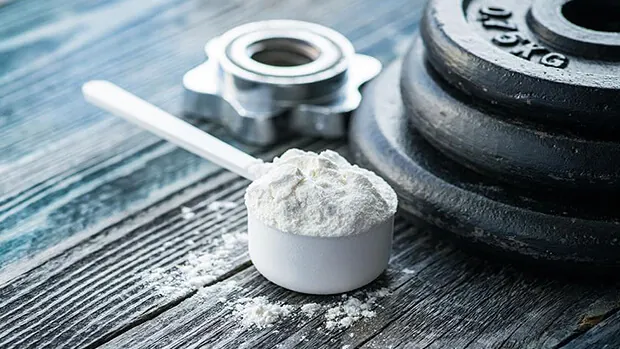Creatine and Strength Training: Benefits, Myths and Usage Guide
2025-07-23

Why Creatine is So Popular Among Lifters
Let’s be honest: creatine has become almost synonymous with strength training. And not without reason. It’s one of the most studied, safest and most effective supplements out there. Whether you're looking to improve your performance, build muscle, or simply recover better, creatine deserves your attention.
What Exactly is Creatine?
Creatine is a naturally occurring substance, found in small amounts in foods like red meat and fish, and also produced by our body. Its job? Help your muscles quickly regenerate energy during short, intense efforts—like lifting heavy weights or sprinting.
Once ingested, creatine is stored mainly in your muscles in the form of phosphocreatine. It plays a vital role in the ATP-PC energy system, allowing you to push harder during training.
The Proven Benefits
Over the years, research has been clear:
-
Increased strength and power
Creatine boosts the ability to produce force during high-intensity movements. -
Faster muscle growth
It helps you train more effectively and contributes to an increase in muscle volume—partly due to greater water retention in the cells. -
Improved recovery
Creatine can reduce muscle soreness and improve glycogen resynthesis after a tough workout. -
Better cognitive function (especially under stress or fatigue)
And all that… without banned substances, hormonal impacts, or unnecessary risks.
Common Myths and Real Talk
Let’s bust a few myths:
-
“It’s just water weight”
Yes, creatine increases intracellular water, but that doesn’t make your gains fake. In fact, this cell swelling may stimulate muscle growth. -
“It’s bad for the kidneys”
No study on healthy individuals has shown any toxic effects. The myth probably comes from confusion with creatinine, a kidney function marker. -
“You need to cycle off”
No. Unlike stimulants, creatine does not lose effectiveness over time, nor does it require a break.
How to Take It: Doses and Duration
- Loading Phase (optional): 20g/day split over 4 doses for 5–7 days
- Maintenance Phase: 3–5g/day, every day, at any time
The loading phase speeds up saturation, but if you skip it and stick to 3–5g/day, you’ll still reach the same level—just more gradually.
Creatine Monohydrate: Still King
Don’t fall for marketing hype. Monohydrate remains the most tested and reliable form. Micronized versions can improve solubility, but other "new" versions (kre-alkalyn, HCl, ethyl ester...) don’t consistently outperform it.
Final Thoughts
If you're training seriously and want to give your muscles a natural, proven edge—creatine is a no-brainer. It's affordable, well-researched and effective. Just take it consistently, stay hydrated, and focus on your training.